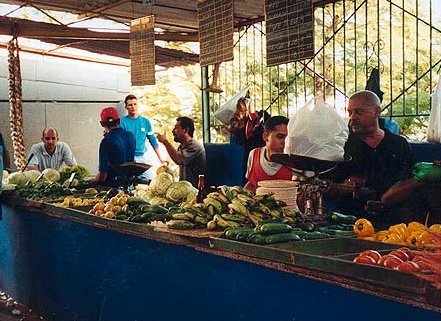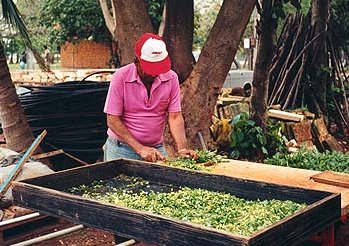Source: Peter Murray, Singularity Hub
Fujisawa Sustainable Smart Town will be built from the ground up with the latest green technologies, including solar panel roofing, smart household appliances, and shared usage of electric cars and bicycles.
Panasonic has just partnered with eight other companies to build an eco-friendly town that uses the latest energy-saving and generating technologies. The houses populating the new town are expected to have virtually zero carbon emissions. It is Panasonic’s hope that the new city, expected to be completed by March 2014, will change the way cities are built in Japan and, eventually, across the world.
Unfortunately, it won’t.
I have no doubt the new city, to be named Fujisawa Sustainable Smart Town (SST), will be the greenest on Earth. But Panasonic should know that, in the end, the town will be more pipe dream than prototype. More helpful than creating a city with the latest in green technologies would be finding ways to incorporate those technologies in already existing city infrastructures. It’s a daunting task, and it’s an expensive task. Until we find cheap ways to replace shingles with solar panels, for example, we’re simply not going to do it.
That being said, you have to start somewhere.
Fujisawa SST will be built on a 47-acre vacant lot where a Panasonic factory once stood about 50 km west of Tokyo and will include aout 1,000 houses. Most of the technologies that will be on display at the town won’t be new, but their multi-layered incorporation will be.
By taking a ground up, green energy approach, Panasonic will be able to optimize the functionality and energy use of all the town’s equipment. Their energy management system will synergistically incorporate created energy, stored energy, and saved energy for maximal efficiency. The created energy will come from solar paneled roofing that will adorn all of the houses as well as public facilities. The energy harvested by the solar panels will then be stored in a new type of home-use lithium-ion storage battery that Panasonic developed itself. According to Panasonic the battery will be able to store enough electricity to power a house for a week. Efficient use of that energy will come from Panasonic’s ECO NAVI range of smart household appliances that sense their surroundings and adjust usage accordingly to reduce wasted electricity. The ECO NAVI refrigerator, for example, has four sensors: a door sensor to detect when it is open, an ambient light sensor that tracks the time of day the refrigerator is accessed, and ambient and interior heat sensors for optimal control of internal temperature. The refrigerator also learns the eating schedule of the household. In times of low access, such as during the workday or at night, it maintains a less cool temperature. Compared to conventional refrigerators, the ECO NAVI fridge reduces energy usage by up to 10 percent.
The developers aim to reduce carbon dioxide emissions in the town by 70 percent compared to 1990 levels.
The layout of city blocks will be planned with the surrounding landscape in mind. A “green axis” of parks and vegetation will line the main roads and form wind paths. Solar panel design will be artistically rendered to blend with the town’s lush green landscape. And, of course, the car of choice for Fujisawa SST residents will run on electricity. Because they will require some electricity from an outside source when enough can’t be generated from solar energy within the town, the cars won’t be completely free of emission. But a city of electric cars well definitely minimize the carbon footprint compared to their gas-guzzling counterparts. Home garage and public facilities will be equipped to promote electrical vehicle ownership and sharing in Zipcar fashion. Currently under consideration is an alternative plan that does away with garages altogether. In their place would be sprawling yards and separate parking areas would hold the cars to be shared by the families in 10 to 20 homes. Electric bicycles will also be available for sharing among residents in an effort to further decrease the town’s carbon footprint.
In an effort to make Fujisawa SST both energy-efficient and safe, many of Fujisawa SST’s public spaces, such as parks, will have storage battery systems accessible by the public in the event of a catastrophe. Given Japan’s high risk of earthquakes, publicly available energy would be crucial in the event residential energy stores were destroyed.
Fujisawa SST’s optimally designed infrastructure will be connected by a power and information network, part of Panasonic’s comprehensive solutions. A Smart Energy Gateway system will connect the energy creation and storage devices as well as appliances on a single network for easy control at in-home displays. Field testing is currently underway for energy-saving technologies to be used in the town’s stores. Energy saving and storage equipment is being developed for efficient use of wind, light, heat and water. Check out the idyllic artistic renderings of the town in the computer-generated tour below.
Fujisawa SST’s timing couldn’t be better for Japan. March’s devastating earthquake knocked out one of Japan’s major sources of energy: the Fukushima Dai-ichi nuclear power plant. Another plant, the Hamaoka plant near central Japan is also being shut down due to safety concerns, further pinching energy resources. To minimize energy demands, the Japanese government has urged its people to save as much as it can. Companies were asked to cut their electricity use by 15 percent. At home, people are being asked to maintain a room temperature of 28 degrees Celcius (82 degrees Fahrenheit), use fans rather than air conditioners and to not leave gadgets plugged in.
Spurred largely by the earthquake, Japan’s Prime Minister, Naoto Kan, recently outlined a new future energy policy for his country. The policy calls for increased emphasis on solar and wind power. In addition the government plans to invest in future, as yet unrealized innovative technologies. In light of the country’s new green initiative, Panasonic is aggressively moving to position itself at the forefront of a market they expect to flourish in the coming years. The company acknowledges that if they stay exclusively in the business of audiovisual and white goods then their future growth will be limited. In the Fujisawa SST spirit of combining capabilities into a single multi-faceted toolset, Panasonic last year acquired Sanyo, one of Japan’s leading electronics companies. The acquisition turned Panasonic into Japan’s second largest electronics company after Hitachi, Ltd. The acquisition enabled Panasonic to develop the lithium-ion batteries planned to be used in the Fujisawa SST homes.
The Fujisawa SST project is a breath of fresh air in a world where efforts to go green are sadly limited. Unfortunately, the main impetus for a new city is the same reason green technologies are slow to take hold in old cities: it is much more feasible to incorporate green technologies into new infrastructures from the start than it is to retrofit old ones. For most buildings and houses, the cost of major remodeling with an already expensive technology is prohibitive. Panasonic’s “ground up” idea is a great one, but the world needs something better. I don’t think New York is going to be rebuilt anytime soon.
[image credit: Panasonic]
image: Fujisawa SST
video: Fujisawa SST
![]()


















![Reblog this post [with Zemanta]](https://i0.wp.com/img.zemanta.com/reblog_e.png)

